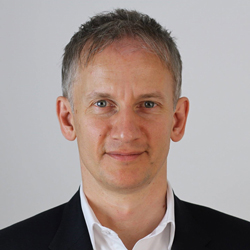
Michael Wallis
Group CIO, SSE
A company must leverage its IT function properly if it wants to achieve its strategic aims and optimise its operations.
A company can develop the world’s most exciting business strategy, notes Michael Wallis, Group CIO of energy company SSE, a generator of renewable electricity in the UK and Ireland. But unless it leverages technology in the most intelligent, creative and dynamic way, it will never achieve its goals. “It’s no good using IT for IT’s sake,” warns Wallis. “You have to match your technology to your business aims.”
SSE’s aim is to be a leading company in the net zero world and is leveraging its IT function across all its business units in order to realise its green ambitions. This includes optimising the performance of its wind farms using data analytics. “By using data to make better decisions — about wind farm layouts, for example — we bring real science to the choices we make,” says Wallis.
Optimising operations with innovative tech
Wallis warns that companies in the energy industry have to operate at the cutting edge of IT just to keep up with the disruptive nature of digital tech.
“The energy sector only started to embrace digital in the last five to ten years,” he says. “The pace of change now is really fast , so our IT function has to be agile, not just in the methods we use, but in the way we think.”
It’s our role to be inspirational and help the business reimagine its operations.
That agility was put to the test during the pandemic, reveals Wallis, when delivery of IT services — to the business and customers — continued apace during the lockdown, with almost 16,000 people working from home. “It showed just how quickly we can respond when there’s a common purpose.”
Going forward, Wallis sees IT at the heart of the company’s net zero mission. “It’s our role to be inspirational and help the business reimagine its operations with the use of innovative technology,” he says. “Sometimes it’s about demonstrating the art of the possible.”


